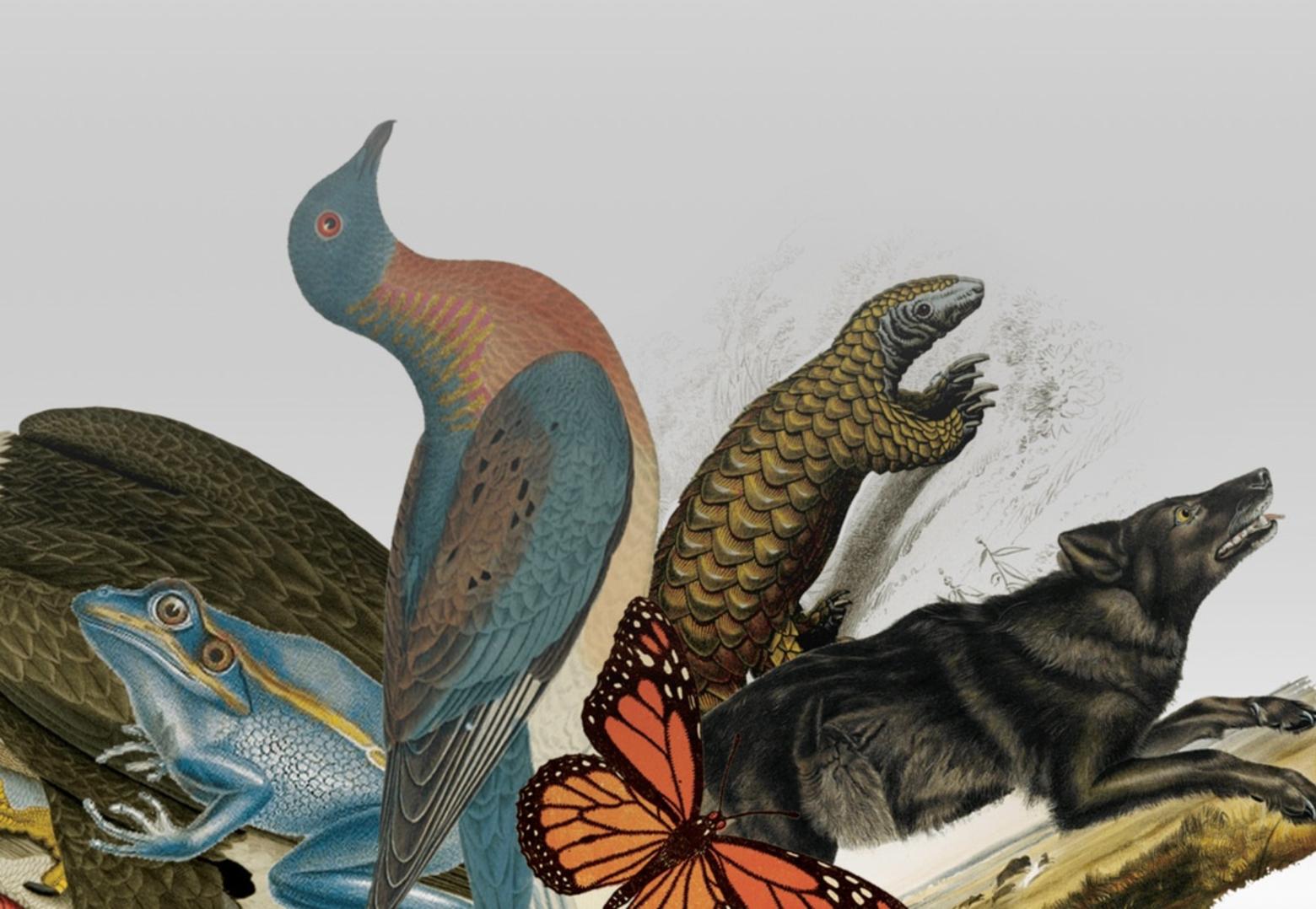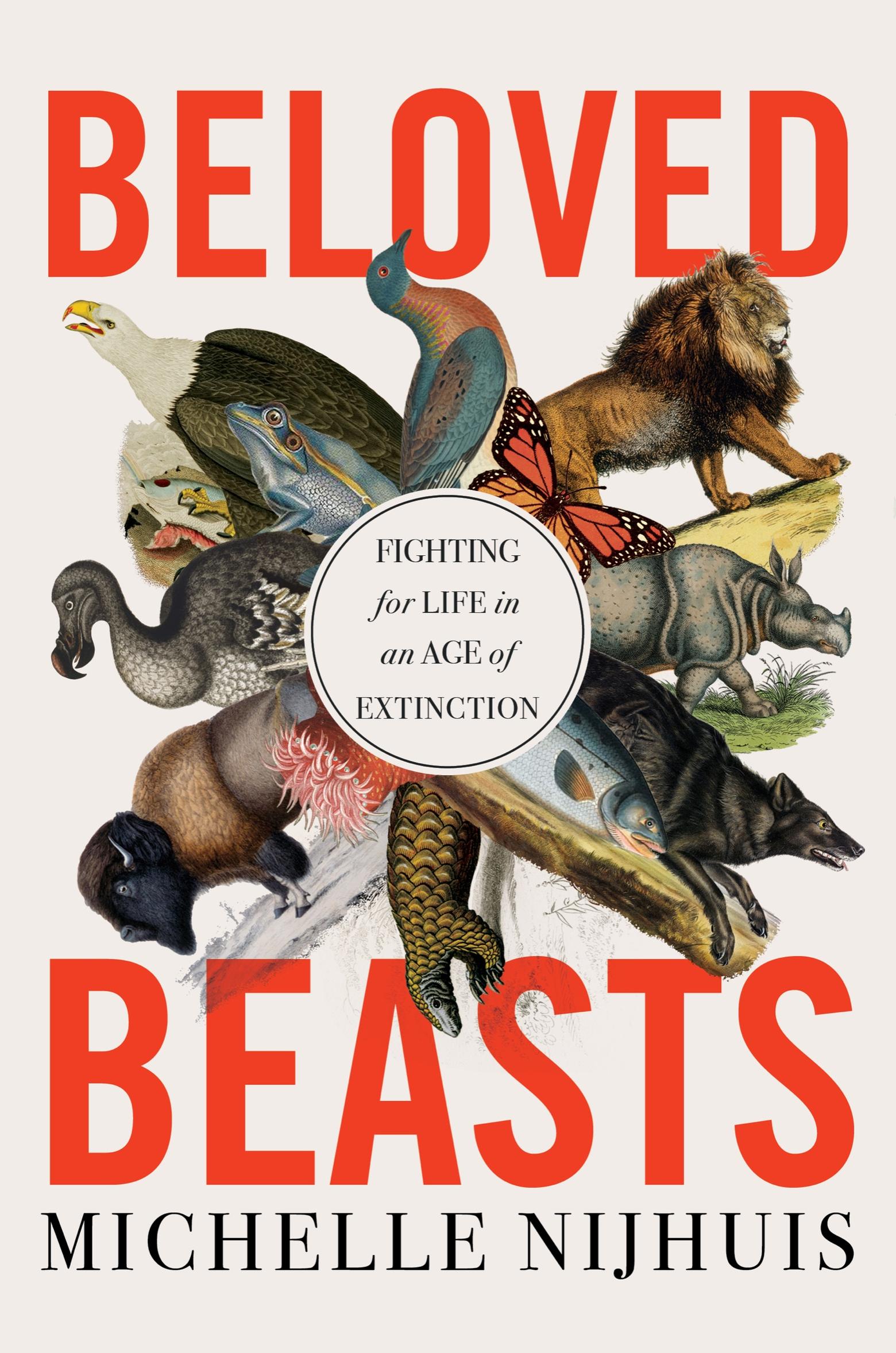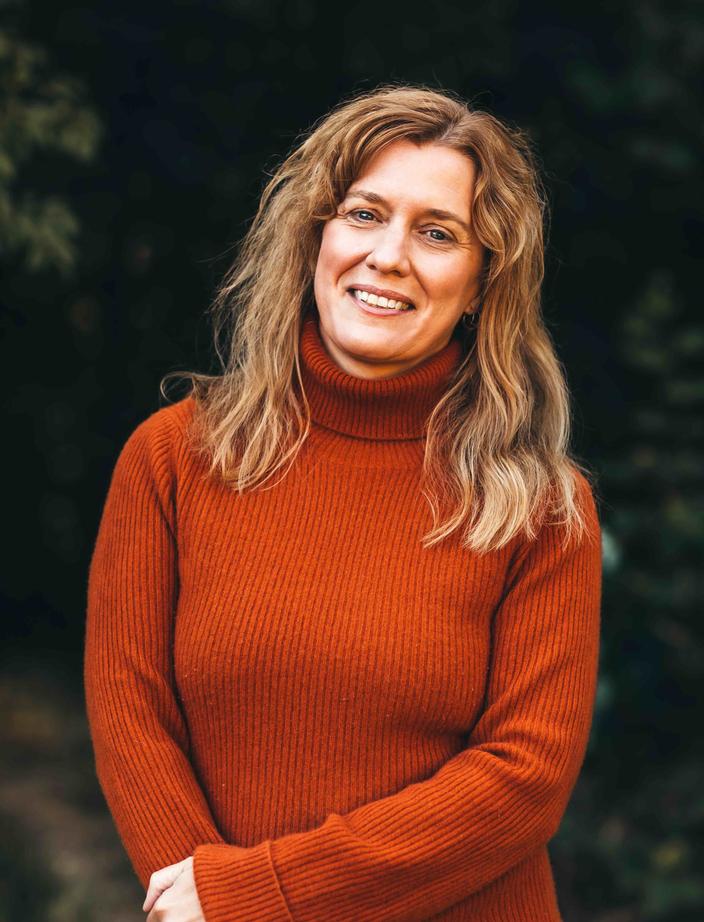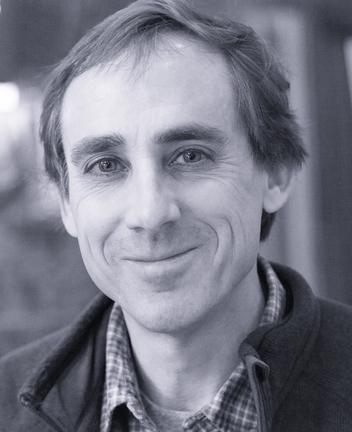Back to StoriesBeloved Beasts Is A Perfect Read For The West—And Our Time
TW: Why is understanding the origins and early days of the modern conservation movement important?
NIJHUIS: I've spent a couple of decades covering conservation and climate change in the U.S. and elsewhere, and in my experience, neither professional conservationists nor their supporters have a very strong sense of conservation's history as a global movement. Those of us who care about conservation tend to know a few iconic names—Rachel Carson, John Muir, maybe Aldo Leopold—and assume that those individuals worked more or less in isolation.
June 24, 2021
Beloved Beasts Is A Perfect Read For The West—And Our TimeNew important book by Michelle Nijhuis tracks evolution of American conservation and arrives at this conclusion: there is still hope but we have to act now
by Todd Wilkinson
Around the world, the United States has been a venerated beacon. Our form of democracy, while messy and hardly perfect, still remains a resilient symbol of what is possible. So, too, the legacy of public lands, public ownership of wildlife, environmental laws and this country creating a forerunning system of nature preserves emulated globally and whose genesis traces to Yellowstone.
With so many momentous events that have happened here, there is good reason why the Greater Yellowstone Ecosystem is considered the cradle of American conservation. And yet today while many of the early architects of conservation are under siege, few can condemn the fact that scenes of untrammeled landscapes, still inhabited by species written off for dead, persist only because of the American model of conservation. We will never know if alternative strategies for protecting lands in the face of 19th-century Manifest Destiny would have worked as well.
Author and longtime environmental writer Michelle Nijhuis has penned an important book that happens to arrive with impeccable timing. Beloved Beasts: Fighting for Life in an Age of Extinction compels us to ask not how, exactly, we've rescued species, but why? At a time when humankind faces so many different challenges, it is worth asking whether the cause of protecting non-human species is elitist, as some portray, or if it is an ennobling cause that brings us dignity.
Today, the Sierra Club is running scared from its association with John Muir, the National Audubon Society grapples with the colonial heritage of its namesake, and in New York City a statue of Theodore Roosevelt was removed and mothballed. The so-called conservation movement, like all of society, is in the midst of a reckoning, but should the achievements of wildland-wildlife conservation be disavowed? These days it depends on who you ask.
Nijhuis has not penned a defense of "the movement;" Instead she offers an eloquent provocative presentation of how we reached the here and now, and what's at stake as we cross the threshold of a major species extinction event—the only one that we know is linked to the habits and proliferation of a single species—us. Conservation is in many ways not about merely giving safe harbor to species but protecting them from our incursion and ways of consuming the places they live.
Nijhuis gets the West—something I note with highest praise—and she is a master science storyteller reminiscent of others giants of the genre, Bozeman's own David Quammen and Elizabeth Kolbert. Her interpretation of conservation, American style, is at once sympathetic to critics and a challenge to those who are either unwilling or unable to see that our fate reflects in our attitude toward defending biodiversity. While the problems are daunting, she reminds that only 120 years ago, most of the species we take for granted in a place like Greater Yellowstone today were nearly wiped out yet our ancestors rallied—the same as we must do now, she notes.
Recently, Mountain Journal had a wide-ranging virtual conversation with Nijhuis. We offer that below along with a strong recommendation that you add Beloved Beasts to your bookshelf.
TODD WILKINSON: Beloved Beasts is a great read that helps highlight the value of Greater Yellowstone, which arguably holds more conservation touchstones than any other place in the U.S. Why do you care about the plight of species and their recovery, why should we care?MICHELLE NIJHUIS: Within conservation biology, there's a long-running and at times very contentious debate over whether species should be protected for their own sake—their intrinsic value—or for their value to humans. I've always been puzzled and frustrated by this argument, because I know that I care about species for any number of reasons: I want to protect species because I think they have intrinsic value and because I like to listen to birds in the morning and because I want my 12-year-old to grow up with access to the clean air and water provided by healthy ecosystems. Most of the historical figures I write about in Beloved Beasts expressed multiple motivations, too: they wanted to protect species because they loved and admired other forms of life and because they wanted to protect the resources humans need to survive. So in Beloved Beasts, I was less interested in why anyone should care and more interested in documenting the many reasons people do care, and have cared, about the persistence of other species.
TW: Why is understanding the origins and early days of the modern conservation movement important?
NIJHUIS: I've spent a couple of decades covering conservation and climate change in the U.S. and elsewhere, and in my experience, neither professional conservationists nor their supporters have a very strong sense of conservation's history as a global movement. Those of us who care about conservation tend to know a few iconic names—Rachel Carson, John Muir, maybe Aldo Leopold—and assume that those individuals worked more or less in isolation.
But over the last 150 years or so, these leaders and many others built on each other's ideas, recognized mistakes and oversights, and—thanks to ecology and conservation biology—learned an enormous amount about what other species need to survive. Understandably, today's conservationists are focused on the emergencies in front of them. But I think it's essential, especially as the threats to life on earth escalate, that both conservationists and their supporters know what the global movement has done right and what it's done wrong—that accumulated experience was hard-won, and we need it now more than ever.
TW: Personally, having written about wildlife conservation issues for 35 years, I must share a point of frustration. There is a perpetuated perception in these times that the conservation movement has been largely frozen in place since its early genesis moments. But the "idea" of a radical construct like Yellowstone has evolved in its concept as a nature preserve in direct proportion to expanding and humbling enlightenment about ecology and importance of healthy ecosystems. Yellowstone is not a place frozen in time. It was set aside to be "unimpaired" for future generations which is arguably noble, not only for the America of today but the country and world of tomorrow. Your book is a touchstone for showing how that evolution that happened over time. What are your thoughts?
NIJHUIS: I agree—I think there's still a general perception that once the boundaries of Yellowstone National Park were drawn, both the place and its purpose have been more or less static. But as you say, over the past century the ecosystem in and around the park has been enormously altered by tourism, development, wildfire, and—famously—the reintroduction of wolves. The purpose of the park has changed, too—its early boosters were most interested in protecting scenic landscapes that would attract visitors, and the park did little to protect bison from commercial hunting. Only in the 1920s and 30s, as the science of ecology advanced, did wildlife protection become a priority for Yellowstone and other parks.
I do think the illusion of parks as places outside of time is getting harder to sustain. The effects of climate change know no boundaries, and they're becoming all too obvious in many parks. And more and more people are aware that most park landscapes have a long human history—that they only seem "pristine" because their original residents were driven out by the U.S. government.
TW: One of the physical realities of Yellowstone, realized as its size was being debated and confirmed shortly after it was founded, is that its boundaries are too small to accommodate the habitat needs of free-ranging species. The same realization applies to many protected areas. In fact, this fact is the very foundation for why we talk about "the Greater Yellowstone Ecosystem" and thinking beyond artificial invisible boundaries. Given what's in your book, what would you say are a few of the big momentous leaps in human conservation thinking that have happened and which are important to our shared stewardship responsibilities today?
NIJHUIS: With the caveat that this is a pretty flagrant generalization, I see the conservation movement as evolving from individual efforts to protect single, iconic species from direct threats to a global effort to protect relationships—relationships both among species and between species and their habitats. When wealthy sport hunters were trying to protect the bison from extinction by commercial slaughter in the late 1800s, they weren't thinking about the bison's role in the prairie ecosystem; they just wanted to keep a few bison alive. It wasn't until the 1930s that Aldo Leopold pointed out that hunting limits were only the beginning—habitat needed to be protected, too. Since then, ecology and conservation biology have given conservationists a much more sophisticated understanding of what species need to survive and thrive.
Now, I think, conservationists worldwide are recognizing exactly what you're describing—that while parks and reserves are useful to conservation, boundaries aren't enough. Conservation can't be just about protecting species from humans—if it's going to be more than a special interest, if it's going to be the everyday practice we all need it to be, it also has to be about living sustainably within ecosystems and alongside other species.
TW: And recognizing abundant lessons evident in the track record and sophisticated knowledge of indigenous people on this continent and others, yes?
NIJHUIS: The conservation establishment has long overlooked and disrupted traditional conservation practices, but it's beginning to recognize that those practices are an essential piece of what we might call the conservation ecosystem, and that they need to be supported. In recent decades, international conservation organizations have contributed to a resurgence in community-led and Indigenous-led conservation efforts all over the world, including North America. The continental-scale effort by tribes and First Nations to more fully restore bison to the plains is one of the most exciting things happening in conservation today, I think—because it's restoring and protecting relationships among species, between species and habitats, and between humans and other species.
TW: There are some arguments being advanced by those on the front lines of diversity-equity-inclusion that preserving non-human species is an expression of elitist white patriarchy, even though reverence for the survival of non-human species is central to Indigenous thinking on this continent. Why is there a disconnect with other groups?
NIJHUIS: I can only speculate, but I do know that many young climate activists are well aware of the racism and colonialism that runs through the history of conservation. One of my aims in the book was to look squarely at both the bad and good in conservation history, with the hope that conservationists today can learn from both. I also hope that doing so helps untangle the appalling acts of some historical figures in the conservation movement from the overall goal of conservation. Some conservationists have had racist intentions, but there’s nothing inherently racist about protecting the long-term persistence of other species—on the contrary, it’s essential to the health and survival of all humans. It’s important to make that distinction, and to make clear that conservation, when done right, can advance social justice.
Some conservationists have had racist intentions, but there’s nothing inherently racist about protecting the long-term persistence of other species—on the contrary, it’s essential to the health and survival of all humans. It’s important to make that distinction, and to make clear that conservation, when done right, can advance social justice.
TW: What did you come to more fully appreciate about the biodiversity crisis as a result of writing this book?
NIJHUIS: One thing I came to appreciate is that while we’re likely heading into an extinction crisis, we are already experiencing an abundance crisis—vertebrate populations are shrinking worldwide. The modern conservation movement started out as an effort to protect extinctions, but it has to be about more than that—it has to be about protecting healthy populations, about protecting species while they’re still common. I mentioned the campaign to more fully restore bison to the plains—one of the reasons that’s so promising, I think, is that it’s working to restore a reasonably healthy population to true abundance. We need more efforts like it.
TW: For decades, activists have largely portrayed resource extraction industries—timber, mining, fossil fuel development, livestock grazing etc—as the main enemies of wildlife conservation, especially on public lands. Yet in recent years the rise of outdoor recreation to industrial strength levels, the human pressures being brought with it, are a major concern of biologists who say wildlife is being displaced. Meanwhile, the outdoor recreation industry brings this generic mindset to all public lands, as if they are all equal, though clearly there are qualitative differences between rare remnant wild land regions, such as Greater Yellowstone, and other places where more recreation pressure might be suitable because there are less or already compromised wildlife values in play. What are your thoughts? Why is it so difficult for both the mainstream conservation movement and the outdoor recreation industry to admit their own activities are negatively impacting wild places?
NIJHUIS: Greater Yellowstone is ecologically valuable in so many ways, and I think both the mainstream conservation movement and the outdoor industry could do a lot more to reduce the recreational pressure on it. They could start by reminding people that there are many, many other places to unplug, roam freely, and enjoy the company of other species—that what we call “nature” isn’t limited to places like Yellowstone, in other words. I love Yellowstone as much as anyone else, but I also love camping in the non-marquee national forest fifteen miles from my house, and I love taking daily walks around my neighborhood with my daughter. All of these places are ecosystems, too, but they’re not as ecologically unique as Yellowstone, and they’re under far less recreational pressure. Let’s see some calendars and catalogs that highlight the recreational rewards of these humbler places.
TW: Following up on the last question, your book is not only eminently accessible and thought provoking but you make the case for ecological resilience—safeguarding more land so that species have a better chance of withstanding changes being brought by climate change in the arid West. Do you believe we are capable of setting aside enough space so that wildlife of the caliber we still have in Greater Yellowstone, and habitat which species need to persist in healthy populations? At the current pace in Greater Yellowstone, landscape fragmentation from development is fast outpacing amount of acreage being protected and public land managers say they are ill-equipped to deal with record numbers of people.
NIJHUIS: I don’t know. The political obstacles are enormous, locally and regionally as well as nationally. I do know that it’s possible—possible in the sense that the conservation movement and the scientists working alongside it have learned a great deal about what other species need, and the rise in Indigenous and community-led conservation has shown mainstream conservationists that there are many ways to protect wildlife and habitat—that traditional park boundaries are one of many strategies. I’m encouraged by the report that the Department of Interior released in early May in response to President Biden’s endorsement of the goal of protecting 30 percent of the planet’s lands and waters by 2030. It embraces broad definitions of protection and conservation while still setting genuinely ambitious conservation goals, and in that sense I think it’s a powerful articulation of the opportunities.
TW: With your book, you’re giving us the overview we need. Journalist to journalist, I want to put you on the spot, somewhat. In assessing the trendlines of human population impacts, and climate change bringing precip disruptions unlike what we’ve seen in the last 150 years, and wildfires, where do you see us being in 30 years? (This is a question I have posed to many, including Ehrlich and did on a couple of occasions to Soule and I am assuming your response will not be sanguine). How can our society make sufficient course corrections in a way that values (in more than non numeric ways) of healthy ecosystems when the future is likely to be even more focussed on humans being human focussed?
NIJHUIS; I think we’re in for a tough few decades, given the predictions of climate models and given the worsening drought, heat, and fire we’re all experiencing in the West. Ecosystems are going to be squeezed; people are going to be squeezed; there will be a lot of suffering—by a lot of different species, including ours. There will certainly be heartbreaking losses. And the blame for much of that will lie with the disinformation campaigns that fossil-fuel companies have been running for decades.
Given that likely future, I think conservation needs to be more humane—by which I don’t mean that it should prioritize human needs over all else. I mean that it has to be more alert to human variety, and to humans’ proven capacity to play a constructive role in conservation. As I said earlier, if the conservation movement wants to succeed at a meaningful scale, it has to support humans in living sustainably within ecosystems and alongside other species—and that’s only going to become more urgent as the pressures on all species increase.
TW: is there a risk of conservation being perceived as anti-human?
NIJHUIS: You mentioned population, so I’m going to take the opportunity to get on one of my soapboxes. I think conservationists made and continue to make a big mistake by focusing on human population growth as the root cause of ecological destruction. Global population growth is expected to essentially level off by the year 2100, with about half of the growth between now and then concentrated in six countries. And any social scientist will tell you that runaway growth, where it does occur, is almost always a symptom of deeper problems—very often a lack of access to reproductive health care and lack of education for girls. From decades of experience, we know that when women have control over their own fertility, family sizes shrink. And yet many conservationists continue to talk about humans as some sort of inexorably multiplying virus. It’s not a great recruitment strategy—who wants to be part of a movement that considers their family to be a disease?—and it’s also untrue.
TW: Over the arc of your career, since those early days at HCN, you’ve seen a lot, become a mom, and have witnessed an evolution in thinking. What gives you hope? And what do you tell people who believe the future (of the way we ponder our relationship with the land and other species) isn’t going to be much different?
NIJHUIS: Immersing myself in the history of conservation was a good reminder that many of the people who have made progress on behalf of other species haven’t had much reason for hope. Some of them pursued conservation during the Dust Bowl and the Great Depression, or through world wars—during times that must have seemed at least as grim as ours. They might not have had hope, but they did have resolve, and that’s what made it possible for them to change the future for the better. They did it, and so can we.
EDITOR'S NOTE: Make sure you never miss a MoJo story by signing up for our free weekly newsletter. Click here: https://bit.ly/3cYVBtK





